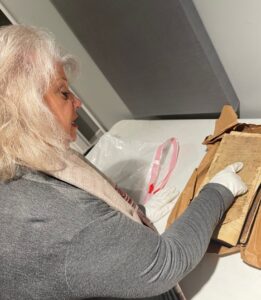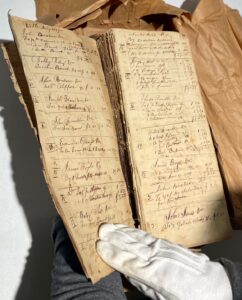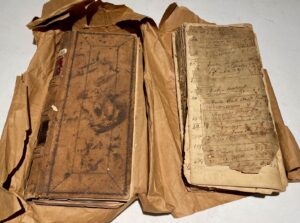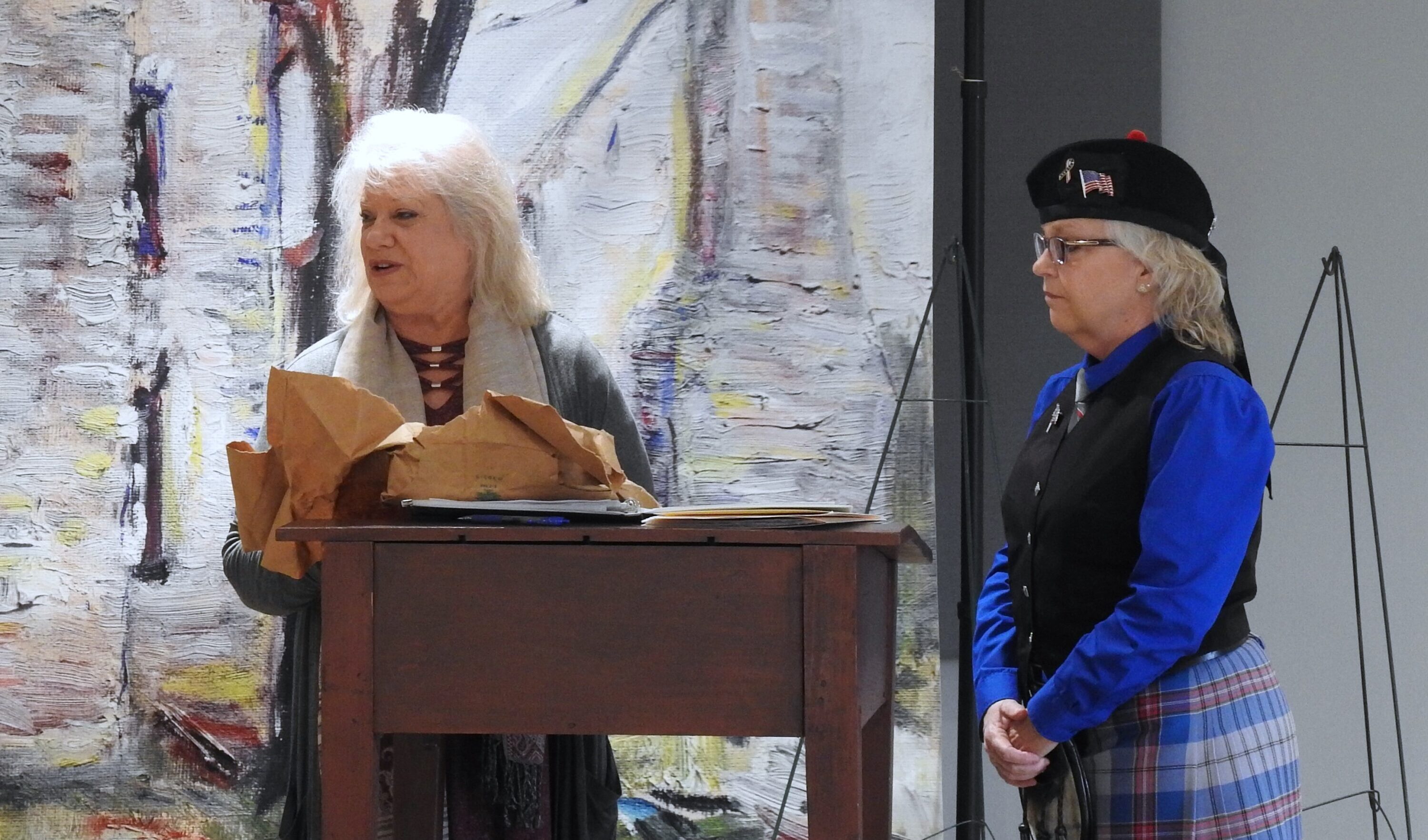It was going to be a busy afternoon at Historic Ramsey House on Sunday regardless. There was a dedication ceremony for Wreaths Across America, and many attendees were picking up wreaths for placement on veteran gravestones in various East Knox County cemeteries.

Jan Loveday Dickens points out names in the ledger.
Local bagpiper and harpist Kelly Ann Shipe was on hand in full regalia to perform Amazing Grace and Taps as part of the proceedings. Shipe has long roots in the Forks of the River community on both sides of her family. Along with toting her bagpipe, she brought along a significant piece of her own family history: two credit ledgers from her ancestors’ trading post at the site formerly known as Gilliam’s Station.
The ledgers have been passed down through her family for generations. One dates from the early 1800s and the other has entries beginning in the 1850s. Shipe said one of her mother’s wishes was for the artifacts to be donated to Ramsey House. Her mother, Anna Louise Monday Shipe, passed away in August at the age of 92.

The oldest of the two ledgers dating to the early 1800s.
For Ramsey House president, Jan Loveday Dickens, the donation is a historian’s dream come true. Full disclosure, we’ve been sitting on this announcement for a couple of months. There was a plan to make the presentation in early November. But as happens often with Shipe, she is called away on short notice to perform at funerals or other events. But this past weekend, the stars aligned for her to be performing at Ramsey House, and the 150 plus year old ledgers arrived with her.
Dickens said the plan is to carefully scan every page to digitize the ledgers for easy research. And of course, to properly preserve and display them in the new exhibit at the visitor’s center, A Community Born of Water and Stone. A quick perusal with white gloved hands turned up well known names in the community such as Campbell, Huffaker, Bogle, Houck, Brabson and McPherson.
Gilliam’s Station was one of the first frontier outposts in what was then the Southwest Territory following the Revolutionary War. It sat on the banks at the confluence of the French Broad and Holston rivers, the literal fork. In present day, a white house sits across Asbury Road from Lebanon-in-the-Fork Cemetery, and the house and the old station sat upon the Brakebill Indian Mound.

Both ledgers will join the permanent collection at Ramsey House.
The station was built by the dashingly named Devereaux Gilliam, a native of Virginia who served in the North Carolina militia during the Revolution. His military career included fighting at King’s Mountain and Guilford County Courthouse. Land grants for the other side of the mountains paid him for his service and brought him and his wife, Edith Eilis, to the Fork (still part of Hawkins County at the time) in 1791. Knox County was founded the following year. He died in 1809. The property eventually was purchased by Francis Ramsey and later inherited by his son J.G.M. Ramsey.
See previous articles in KnoxTNToday here, here and here. For more information on Historic Ramsey House go here, where the book Forgotten in the Fork is exclusively available in the gift shop.
Beth Kinnane writes a history feature for KnoxTNToday.com. It’s normally published each Tuesday and is one of our best-read features.

